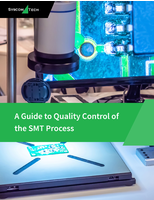Dispatching Software uses concatenated speech technology.
Press Release Summary:
Using speech software algorithms, CADVoice® v5.8 provides optimal clarity and natural sound for automated 911 voice dispatching. Feedback mechanisms let users know system is processing information and time that will elapse before processing activity is completed. Simultaneous with dispatch announcement, CADVoice® system can activate alarms and lighting in fire stations, open and close fire station's garage bay doors, and turn off gas stoves as rescue crew is leaving.
Original Press Release:
Locution Systems, Inc. Introduces New Version of CADVoice(R) Automated Dispatching Software with Enhanced Voice Capabilities
Locution Systems also introduces new software development team
GOLDEN, Colo., Oct. 15 /-- Locution Systems, Inc., a provider of advanced, automated public safety dispatching, zoned dispatching, and fire station alerting and control technology, today introduced a new version of its advanced automated 911 dispatching software -- CADVoice(R) Version 5.8.
In addition, Locution Systems also unveiled a new software development team that worked with Locution Systems President, Founder and Chief Technology Officer Glenn Neal, to develop the new version of the software.
CADVoice(R) 5.8 will be available in November 2007 to all new Locution Systems customers. Due to customization at current installations, current Locution Systems customers will be phased into the new software level by Q2 2008. The price for the most basic configuration of CADVoice(R) 5.8 is $27,000 for software for a 911 communications center, and $6,185 per fire station, which is a fully enclosed system that includes the CADVoice(R) 5.8 software, a small-form-factor personal computer, a Station Control Unit and Relay Control. Additional options such as CADVoice(R) Radio, CADVoice(R) Mobile, ZoneTracker(TM), its zoned alerting system, the advanced audio database, and various specialty alerting equipment are extra.
A Look at CADVoice(R) Version 5.8
The primary enhancements contained in CADVoice(R) version 5.8 are new speech software algorithms that result in even higher clarity and even greater "natural" sound for automated 911 voice dispatching, as well as enhanced feedback mechanisms for users.
Locution Systems' CADVoice(R) relies on advanced voice technology, known as concatenated speech technology. Concatenated voice technology is based on a real human voice that is pre-recorded, digitized, and stored in an audio database -- which is why the automated 911 dispatches spoken by the system sound so real.
"In voice technology applications, the spaces between words, the pauses, and the natural 'rises and falls' that occur in conversation are just as important as the words that are spoken," said Glenn Neal, Locution Systems president, founder, and Chief Technology Officer. "CADVoice(R) 5.8 features a more versatile approach to how the voice and audio bits that form sentences are processed. That is what gives the new voice of CADVoice(R) an even more natural sound and flow."
Other additions to CADVoice(R) 5.8 include enhanced feedback mechanisms so that users know that the system is processing information and the time that will elapse before the processing activity is completed. This addition is particularly helpful in activities such as updating a fire department's audio database.
"We are excited to announce our alliance with the ten-year-old software engineering company, Boulder Labs, Inc., founded by Robert Gray, Ph.D.," said Neal. "Boulder Labs, which specializes in developing innovative products, has spent six months working with Locution to prepare the release of 5.8."
"We're pleased to be helping Locution Systems take their CADVoice(R) product to the next level by leveraging our extensive expertise, depth of talent, and software engineering best practices," said Gray. "Boulder Labs, with a strong team of twelve software engineers, has a track record of successfully bringing quality products to market in a timely and cost-effective manner. We routinely work with inventors, scientists, and entrepreneurs to help create products that reach new levels in technology arenas."
How Locution Systems' automated dispatching works
The dispatching portion of the CADVoice(R) system automatically routes, creates, and speaks a clear, accent-neutral dispatch announcement about a fire or medical emergency to firefighters and paramedics designated to handle the call. This announcement is created when dispatchers at a 911 communications center review and approve the emergency information generated by the emergency communications center's Computer-Aided Dispatch (CAD) system after a 911 call is received.
The sophistication of the CADVoice(R) system also allows for the entire emergency dispatch to be spoken by the computer (including the rescue unit being dispatched, type of emergency or incident, street address, and landmarks near the emergency). Response time savings that can occur from implementing automated dispatching have ranged from 20 seconds per call to more than three minutes per call during high call volumes or large-scale emergencies -- which can significantly improve the outcome when someone is having a heart attack, or is pinned under a car.
Simultaneous with the CADVoice(R) automated dispatch announcement, the CADVoice(R) system also can automatically activate alarms and lighting in fire stations, open and close the fire station's garage bay doors, turn off gas stoves as a rescue crew is leaving for an emergency, and more.
The History of CADVoice(R)
The CADVoice(R) system was developed by Glenn Neal, a pioneer in public safety technology. In the 1980s, Mr. Neal -- a software engineer -- was instrumental in the development of one of the first e-911 systems in the United States (in which an incoming emergency call to a 911 center automatically is linked to the address of the caller). In 1993, Neal developed the initial version of the CADVoice(R) automated dispatching system. The early version was a hardware-based system, using a series of voice chips and specialized hardware.
However, as technology and processing power improved, and the cost of computer memory was drastically reduced, it became possible to store an entire audio database for a city on a standard personal computer, rather than proprietary hardware.
Once these technological developments came to pass, in 1998, Neal worked with a team of software developers, and re-engineered the system to be software driven, written to open, industry-standard software platforms, and to run on standard PCs.
The new 5.8 version of CADVoice(R) also features this software development team approach, in which Neal worked closely with a team of developers at Boulder Labs to upgrade the voice algorithms, and enhance user feedback mechanisms.
"CADVoice(R) has a long history of helping public safety departments improve their response times to emergencies, as well as reducing stress for 911 dispatchers and for firefighters and paramedics out in the field," noted Neal. "CADVoice(R) currently is operating in small, medium, and large cities and counties throughout North America -- serving more than 19 million people in the United States and Canada."
About Locution Systems, Inc.
Founded in 1986, Locution Systems, Inc. offers a comprehensive suite of automated dispatching, zoned dispatching, and fire station alerting and control technologies for public safety applications. Locution Systems' CADVoice(R) automated dispatching and alerting products are based on the most advanced public safety technologies on the market today. Locution Systems' products feature software-driven technology that's more cost-effective to maintain than traditional hardware-based systems. The products easily integrate with standard Computer-Aided Dispatching (CAD) systems operating in most 911 communication centers. Locution Systems' products are being used in many major cities throughout the United States, and have been proven to speed response times, as well as reduce 911 call stacking, dispatcher stress, and operational costs. Locution can be reached at (303) 932-0014, or http://www.locution.com/.
CADVoice(R) is a registered trademark of Locution Systems, Inc. ZoneTracker(TM) is a trademark of Locution Systems, Inc.




